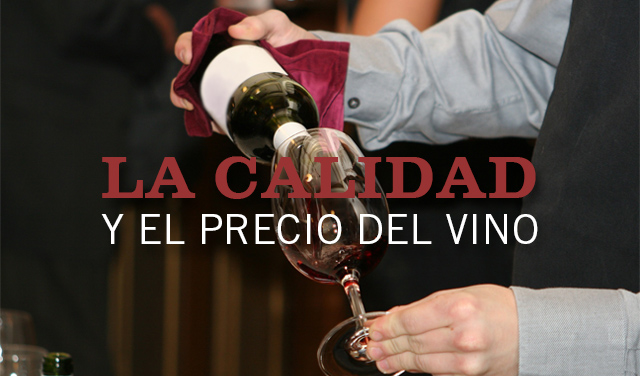The quality and price of wine

Factors affecting quality
1. Environmental factors
Apart from obvious factors such as the grape’s genetic structure (genotype) or its expression in the growing area (phenotype or "terroir"), the impact of climate and weather affects the proper development of the vine and its fruit in different ways. To obtain a harvest of healthy, ripe grapes, plants need carbon dioxide, water, sunlight, heat and nutrients.
Heat and sunlight directly influence correct grape ripening. Sunlight acting as energy allows the grape to mix carbon dioxide and water, creating sugar. This is essential, since this sugar is transformed into alcohol during fermentation.
Some grape varieties need a warm climate to achieve ripeness (Cabernet Sauvignon , Syrah ... ) while others need a cooler climate to highlight their fruity notes (Sauvignon Blanc, Pinot Noir ... )
The water required for vine development can come from rain, from the soil or from irrigation. Excessive amounts of water will cause the grapes to swell, thereby diluting the flavors and sugars. This would provide us with higher production but with a simple and unstructured wine.
In areas with water shortages, as in many New World countries, irrigation is essential. The opposite is the case in areas with frequent rainfall (as in many European countries), where the best vineyards are grown on slopes and soils that facilitate water drainage (gravel, limestone).
The soil provides the nutrients necessary for proper vine development. While the vine is easily adaptable to different soil types, the best quality grapes are often obtained in poor soils.
In short, we could say that wines made from grapes grown in hot climates have more alcohol content, body, tannins and less acidity. Conversely, in cooler climates we’d be talking about lower alcohol content, less tannin and body, but higher acidity.
2. Vine growing
Physical activity in the vineyard (pruning, harvest, etc.) and yield monitoring are the two main factors that affect grape quality.
Farming techniques allow uniform and to a certain extent, controlled ripening. Proper pruning, controlling the number of grape clusters per vine, canopy and leaf area management (affecting the increase or decrease in temperature and degree of exposure of the clusters to the sun and heat) are fundamental tasks in all quality vineyards.
Yields per vine also have a direct impact on grape quality. Low yields help obtain riper grapes with more concentrated flavors. However, controlling the number of clusters is a complicated task and requires a lot of time, which will be reflected in the final price of the wine.
Factors affecting the price
What determines the cost of producing a bottle of wine? Here is a breakdown:
1. In the Vineyard
- The cost of land
- The degree of mechanization
- The cost of labor and equipment
2 . In the Winery
- The equipment of the facility, its maintenance and its efficient use
- The cost of barrels (new or used )
- Facilities required for aging
3 . Bottling, distribution and sale
- For wines exported the exchange rate will affect the final retail price
- The cost of bottles, cases, labels and packaging
- Transport
- The sales margins of the distributor or retailer
- Taxes
As we have seen, hidden behind every bottle is an enormous amount of care and work. An attention to detail that goes from working the vineyard, to the effort of resellers, distributors and retailers.
